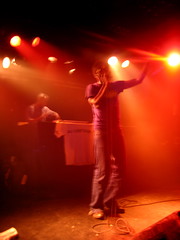remember me
José van Dijck's article 'From shoebox to performative agent: the computer as personal memory machine' (New media and society 7 (3)) is well worth reading if you are interested in questions concerning digital memories and the self. The author discusses a handfull of examples of actual and conceptual memory machines and criticizes them for understanding computers as jukeboxes of memory. Her point is that we need to examine the performative nature of digital technologies, i.e. the role of technologies in the active staging of memory. The act of recording our everyday lives shape the nature of remembering.
I can hardly write about self writing/self recording without mentioning memory. I have been thinking in terms of archiving life and performing and constructing selves, but this article explicitly stated the obvious. Our memories are not neutral. We shape and construct them (with our minds or with technology). And memories in part shape and construct us.

 Remember
Remember 